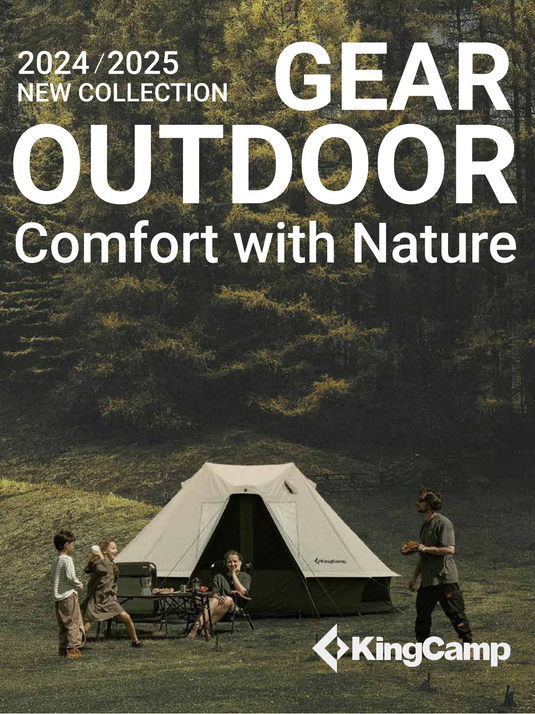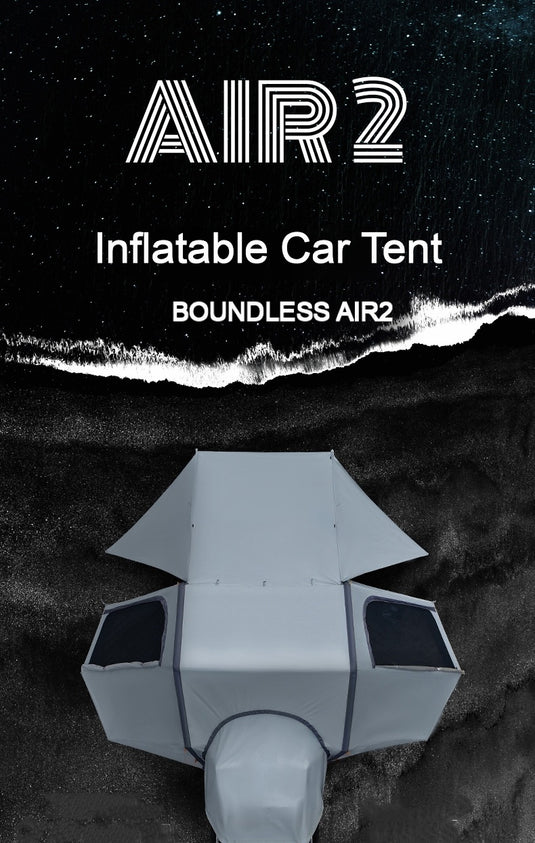Rest Assured: How KingCamp Tents Block Light For Seamless Sleep
Trying to sneak in a midday nap or sleep past sunrise on a camping trip? Odds are the sun will interfere as light streams in to disrupt your slumber. That's why choosing a tent with top-notch blackout capabilities is essential for high-quality sleep in the outdoors. KingCamp tents incorporate advanced light-blocking technologies into their designs, from opaque fabrics to smart pole placements. In this blog, we'll review how KingCamp tents create dark, restful sanctuaries even in the brightest conditions. No more tossing and turning as the sunlight assaults your tent. With KingCamp, you can sleep soundly during any part of the day.
Thick Fabrics Prevent Light Penetration
The most straightforward way KingCamp tents achieve full blackout is through the use of thick, opaque fabrics that simply don't allow light to pass through.
For example, the KingCamp Cave 6 tent uses a 68D ripstop polyester for the rain fly and inner tent. With a high denier rating and tightly woven thread, this tough material is hard for sunlight to permeate. The result is a dark, shaded interior even at high noon.
Meanwhile, the KingCamp Claire 6 tent employs a 210T polyester Oxford fabric layered with polyurethane coatings. This dense, stiff material effectively blocks external light sources. The grey hue also inhibits the absorption of light and heat from the sun's rays.
With their burly opaque fabrics, KingCamp tents prevent light from filtering in and disrupting sleep cycles. The tightly constructed skins maintain an inky darkness inside.
1. Thick Fabrics - KingCamp tents use high denier, opaque fabrics to physically block external light from filtering inside. Tight weaves prevent photon penetration for true blackout conditions.
2. Vestibule Shade - Angled vestibules and doorway orientations create shaded zones as sunlight shifts during the day, preventing glare and brightness.
3. Door Covers - Convertible covers transform mesh doors and vents into light-blocking panels when darkness is needed for sleeping.
4. Rainfly Design - Overhanging rainflies and flush-fit connections eliminate backlighting, keeping inner tent fabrics dimmed.
5. Pole Placement - Strategic pole and seam placements stretch rainfly canopies wider to maximize shade coverage and light capture.
6. Color Selection - Dark and neutral tent colors absorb rather than reflect light, reducing inner illumination and glare.
With this multilayered approach, KingCamp tents provide complete blackout experiences. Both material properties and structural configurations are leveraged to prevent any sunlight infiltration. By addressing all light entry points, KingCamp tents create sleeping sanctuaries free of disruptive rays.
Vestibules and Wall Layouts Provide Shade
Clever arrangements of walls, doors and vestibules also allow KingCamp tents to block light by creating built-in shade zones.
The KingCamp Solong 3 tent uses an integrated vestibule and door configuration such that no wall is ever in direct sunlight all day. One side or the other is always shaded as the sun's angle changes. This prevents harsh light and glare from assaulting campers.
In the KingCamp Wanderlust 2 tent, two doors can be oriented east/west to shade the north and south walls in the mornings and evenings when sunlight shines horizontally under the rain fly. The underhang of the fly itself also casts key shadow lines.
Through thoughtful layouts, KingCamp tents strategically shade their most vulnerable sections to keep sleeping areas dim. The arrangements account for sunlight's shifting path to spread shade evenly.

Vent and Door Cover Flaps Add Darkness
For mesh doors and ceiling vents that could leak light, KingCamp tents utilize flap covers that fasten into place to block sunlight.
The KingCamp Taga 3 tent employs a rainfly with mid-height vents that can be closed via zippered flaps when darkness is needed for sleep. Near the doors, adjustable awnings create shade over the mesh when required.
Inside the KingCamp Neoair 2 tent, zip-closed window panels can obscure the fine mesh walls during bright mornings or afternoons. Simple fabric curtains do the same for ceiling vents.
These convertible cover flaps allow airflow when desired, but readily transform openings into light-tight barriers. KingCamp tents let you control lighting conditions.
Smart Rainfly Designs Prevent Backlighting
Rainfly assemblies are engineered not just for weather protection but also light management. Clever fly design prevents "backlighting" which occurs when sunlight shines through the outer fly, making the inner tent fabric glow.
The KingCamp Cave 6 tent uses a broad rain fly that overhangs each side several feet, closing off potential backlighting angles. Linking pole points are positioned to maximize this light-trapping underhang.
On the KingCamp Cliff 2 tent, the rain fly mounts flush with the inner tent walls with no gap in between. This seamless connector eliminates any space for backlighting to creep in.
By considering sunlight paths, KingCamp rainfly layouts prevent oblique rays from sneaking in around cover edges. The flies are configured to plug light leaks.
Whether car camping at a family picnic or bike touring across multiple time zones, quality shut-eye is non-negotiable. With their multilayered light blocking technologies, KingCamp tents provide portable bedrooms where you can sleep soundly no matter how brightly the sun is shining outside. The next time you need total darkness for sleeping, just zip up a KingCamp tent and rest assured the night will be as dark as midnight at high noon. Enjoy your best camping sleep ever inside these blackout sanctuaries.




